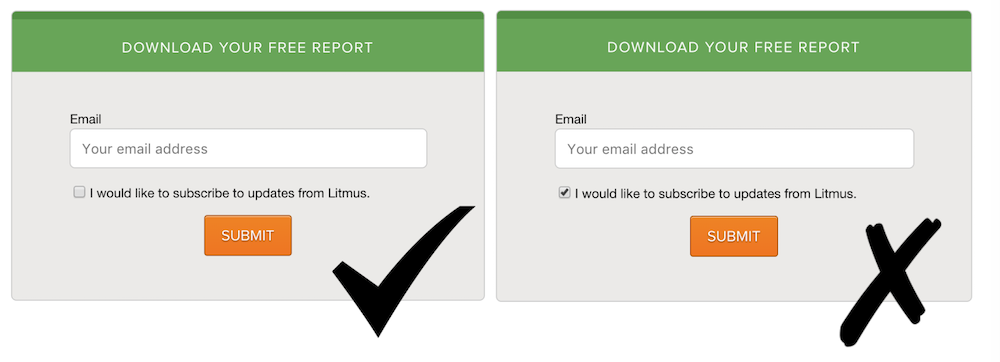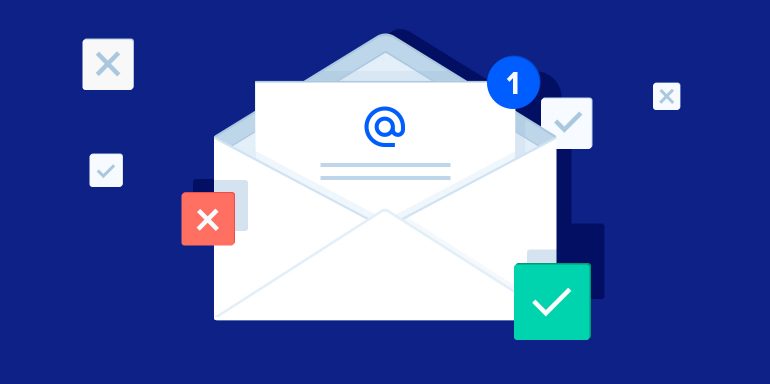Sometimes you check your inbox and think, “how did (insert brand name) get my email address?” Well, you’re not alone. This is the result of bad permission-based marketing.
Other times, you expect to get offers, like ones from your favorite retailers or coffee chains. Whether they’re promotions or loyalty rewards, this kind of permission-based marketing can boost trust and customer lifetime value. The latter can do just the opposite. Today, we look at how to get permission-based marketing right.
What is permission-based marketing?
Permission marketing, also known as permission-based marketing, refers to a type of marketing strategy focused on getting consumers’ permission to serve them promotional messages. The term “permission marketing” was coined in 1999 by marketer Seth Godin in a book by the same name.
When you sign up to receive email marketing updates, follow a brand on social media, or input your phone number to get a demonstration of the software, you are taking part in permission-based marketing. Permission-based marketing can be implicit or explicit.
The above examples are explicit. They involve the user physically choosing to receive marketing content.
Implicit permission marketing involves tactics like pre-checking opt-in boxes on forms, which require users to uncheck if they don’t want to receive marketing messages from the brand:

Under new privacy regulations like GDPR, this specific tactic is no longer allowed on forms, and permission must now be explicit.
Permission marketing vs. interruptive marketing
Unlike permission marketing, interruptive marketing doesn’t get permission from users to serve them messages. Examples of interruptive marketing might include promoted content on social media, display ads, or email blasts to purchased addresses.
Permission marketing vs. permission advertising
While permission marketing focuses on unpaid methods of earning customer permission, permission advertising uses paid methods. Retargeting ads, for example, are a permission-based advertising tactic. A consumer visits a website, allows cookies, and sees a paid advertisement across Google Display or Facebook.
Good permission marketing vs. bad permission marketing
It’s easy to see why permission-based marketing comes with so many benefits. People don’t like irrelevant ads, and they don’t like being interrupted when they’re trying to watch a video, read an article, or play a game. When you use interruptive marketing methods, you degrade the user experience.
The same goes for using implicit marketing methods. When you hide your intentions to send promotional content in your terms of service, or you make visitors uncheck boxes, or you track them without their consent on your website, you’re not obtaining permission from them. This is bad permission marketing.
When people give your brand permission to contact them, they expect to hear from you. So when they see your emails in their inbox, or they get a call from you, they don’t feel like their personal space has been invaded. When permission marketing is done wrong, users will wonder how you got their information when they see your promotional messages.
Benefits of permission-based marketing
If you’re going to send marketing messages to your audience, getting explicit permission isn’t just the way regulations demand you do, it’s also the most effective method. Here’s why:
- Boost brand reputation: Permission-based marketing still isn’t as prevalent as you’d assume it would be by now. As a practitioner, you immediately boost brand trust when there are, as Luda Greko puts it for ActiveTrail, “numerous businesses who continue to indulge in unscrupulous practices such as purchasing mailing lists, spamming their subscribers with an array of irrelevant content, and failing to provide a simple way to unsubscribe.” Simply giving people a choice to opt-in instead of making them opt-out shows you’re acting in their best interest, not in yours.
- Greater relevance: When consumers opt in to your marketing communications, it’s because those messages are relevant to them. Says Kayla Carmichael: “If you sign up for Starbucks Rewards, it’s likely because you love their drinks and think the incentive of earning points for each vanilla latte you buy is a pretty good deal.” When these messages are more tailored to the visitor, then they’re useful, and visitors are more likely to click engage with them. Personalization is a major influencer of buying decisions.
- Lower cost, higher return: Of course, when your messages are more relevant, it doesn’t just translate to high TOFU metrics like click-throughs. Relevance means leads are more receptive to your messaging and are more likely to progress smoothly through the funnel. And companies that excel at lead nurturing generate 50% more sales-ready leads at a 33% lower cost.
Permission marketing examples
ActiveTrail

In this exit popup from ActiveTrail, notice how this opt-in box at the bottom, next to “I agree to receive emails,” is unchecked. The user has to check it and click “Submit” to give ActiveTrail permission to send them newsletters. This is excellent permission marketing at work.
Marketing Insider Group

In this footer from Marketing Insider Group, an email capture form asks for visitors’ permission to send marketing resources and emails.
Backlinko

This Backlinko homepage features a form with a clear proposition: Enter your email, get SEO tips from Brian Dean.
HubSpot

HubSpot’s blog subscription form is an excellent example of permission marketing. Not only does it let the visitor pick the content they want to receive, but they can select how they get it–email or Slack. Most importantly, the copy below the form tells the visitor exactly what they can expect to get in their inbox when they sign up.
Permission marketing relies on the conversion
When done right, permission marketing is far more effective than traditional methods of interruptive advertising. That said, it’s challenging to do right.
And that’s because permission marketing relies on transparency and conversion. You have to tell visitors exactly what you’re going to do with their information, and then you have to convince them to give it to you.
This isn’t easy for anyone. However, it’s easier for brands that personalize. When an offer is relevant and tailored to the individual, that individual is more likely to exchange their information for something useful to them. Learn how to scale personalization throughout all your permission marketing campaigns with an Instapage Enterprise demo.

See the Instapage Enterprise Plan in Action.
Demo includes AdMap™, Personalization, AMP,
Global Blocks, heatmaps & more.
